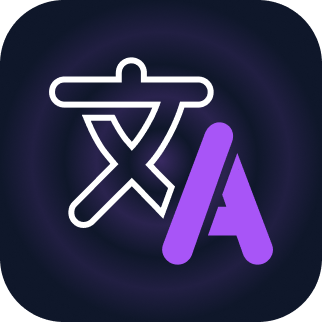Top 10 Localize Alternatives for 2025
05/20/2025
Localize is a popular tool for managing translations, but if you're exploring other options, here are 10 great alternatives that can fit various use cases and budgets.
Whether you're a developer looking for a simple API, a project manager needing a robust platform, or a small business seeking an affordable solution, these alternatives have you covered. Each tool has its unique features and pricing models, so you can find the perfect fit for your translation needs. These alternatives offer a range of features, from user-friendly interfaces to powerful APIs, making them suitable for different types of projects. Whether you're a small startup or a large enterprise, there's something here for everyone.
In this article, we'll explore each alternative in detail, highlighting their pros and cons to help you make an informed decision.

1.Crowdin
Crowdin is a robust localization management platform designed for large-scale teams. It offers real-time collaboration, over 70 integrations (like GitHub and Figma), and a powerful API to automate localization workflows.
While comprehensive, it can require a steep learning curve LingoJs is more lightweight and easier to get started with.
Pros
- ✅ Real-time collaboration
- ✅ Extensive integration options
Cons
- ❌ Can be pricey for small teams
- ❌ UI can feel overwhelming initially

2.LingoJs
LingoJs is a no-code localization platform built for speed, simplicity, and affordability. Ideal for startups and agile teams, it lets developers manage translations seamlessly without the bloat of enterprise systems.
A modern alternative for teams who want full control without complexity.
Pros
- ✅ No code required
- ✅ Easy to use
- ✅ Affordable pricing
Cons
- ❌ Limited features compared to enterprise solutions
3.Phrase
Phrase offers a comprehensive localization suite with smart features like translation memory, QA checks, and a flexible API. It supports complex enterprise needs and collaborative translation workflows.
It's powerful but can be overkill for smaller teams LingoJs is faster to deploy and easier to manage.
Pros
- ✅ User-friendly interface
- ✅ Strong API support
Cons
- ❌ Can be expensive for larger teams

4.Transifex
Transifex is designed for high-volume content and distributed teams. It supports over 30 file formats and offers a developer-focused API, making it a strong choice for global organizations.
However, for smaller teams or quick localization needs, LingoJs is simpler and more cost-efficient.
Pros
- ✅ Great for large teams
- ✅ Supports multiple file formats
Cons
- ❌ Can be complex for small projects
- ❌ Pricing can be high

5.Weglot
Weglot enables instant website translation using automatic detection and multilingual SEO. It's popular for marketing sites and ecommerce platforms thanks to its plug-and-play setup.
Great for simple websites, but LingoJs offers more control and flexibility for developers building custom apps.
Pros
- ✅ Simple integration process
- ✅ Supports multiple languages
Cons
- ❌ Limited features for advanced users
- ❌ Not intuitive

6.POEditor
POEditor is a cloud-based localization tool with a straightforward interface and support for many file formats. It’s a budget-friendly option for small to mid-sized projects.
While effective, it lacks the real-time and automation features that LingoJs offers out of the box.
Pros
- ✅ Affordable pricing
- ✅ User-friendly interface
Cons
- ❌ Limited features compared to larger platforms

7.Weblate
Weblate is an open-source localization platform that integrates directly with version control systems. It's highly customizable and ideal for open-source contributors or teams with DevOps experience.
Requires self-hosting and technical overhead LingoJs is hosted, scalable, and up and running in minutes.
Pros
- ✅ Open-source
- ✅ Highly customizable
Cons
- ❌ Requires self-hosting
- ❌ Can be complex for beginners

8.Lingohub
Lingohub provides standard localization features like translation editing, file syncing, and team workflows. It’s designed for SMBs and supports various file formats.
However, LingoJs provides a faster, smoother onboarding experience with a cleaner, more modern UX.
Pros
- ✅ User-friendly interface
- ✅ Good for small to medium projects
Cons
- ❌ Limited features compared to larger platforms

9.Zanata
Zanata is an open-source translation platform originally built for community-based projects. Though less active today, it's still usable for self-hosted setups.
In contrast, LingoJs is a modern, cloud-native solution built for today’s development pipelines.
Pros
- ✅ Open-source
- ✅ Highly customizable
Cons
- ❌ Requires self-hosting
- ❌ Can be complex for beginners

10.Gtranslator
Gtranslator is a free PO file editor for the GNOME desktop environment. It's lightweight and best suited for individual translators or small-scale manual projects.
Compared to full-featured platforms like LingoJs, it lacks automation and collaboration capabilities.
Pros
- ✅ Free and open-source
- ✅ Good for small projects
Cons
- ❌ Limited features compared to larger platforms
Conclusion
For teams looking for a simple, cost-effective solution that still delivers a smooth localization experience, modern tools like LingoJs are proving increasingly popular especially among startups and agile dev teams.
If you have any questions or need help getting started, feel free to reach out to us. Happy translating!
